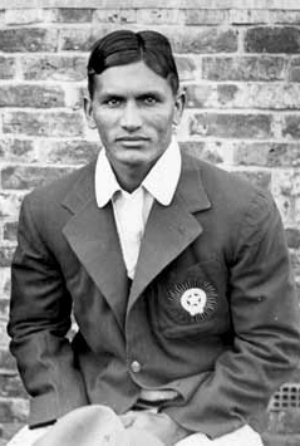Dr. Jehangir Khan
Jahangir, who hailed from a Pashtun family, was a big man who stood six feet and bowled medium pace. He came from a famous cricketing family that produced Pakistan captains Baqa Jilani, Imran Khan, Javed Burki and Majid Khan, the last being his son. Majid’s son Bazid Khan also represented Pakistan for the first time in 2005, making the family the second, after the Headleys to have three consecutive generations of Test cricketers. Baqa Jilani is brother in law of Dr. Mohammad Jahangir Khan also represented India in Test Cricket.
Jahangir scored 108 on his first-class debut and took seven wickets in the second innings of the match. He represented India in her first ever Test against England at Lord’s in 1932. After the tour, he stayed back in England and took a doctorate from Cambridge University. He passed the final Bar from Middle Temple. In that time he was Cambridge blue in cricket for four years. He also made two appearances in Gentlemen v Players matches. In 1935 playing for Indian Gymkhana, he also scored 1380 runs in two months, at an average of 70.[citation needed]
When India toured England in 1936 he joined the team and appeared in all three Tests. His best bowling during his time at Cambridge was a 7 for 58 against the champion county Yorkshire. Back in India, he played in the Bombay Pentangular in 1939.
While playing against Marylebone Cricket Club at Lord’s in 1936, he bowled a ball to Tom Pearce that struck and killed an airborne sparrow. The bird was subsequently stuffed and mounted on the match ball which is currently exhibited in the MCC Museum at Lord’s.[2] Jahangir was to captain India in a tour of Ceylon in 1940–41 that was cancelled due to the war.[3]
